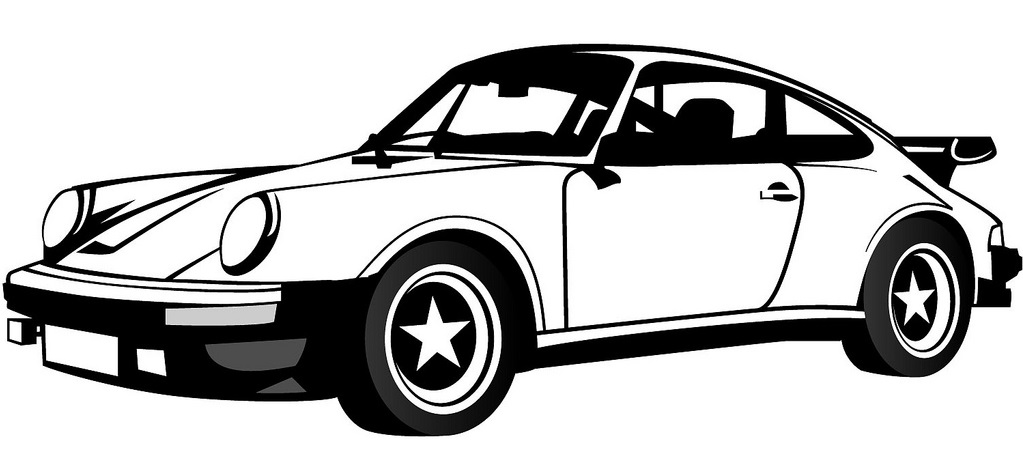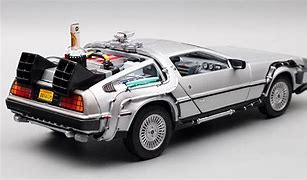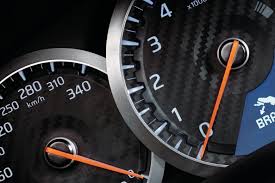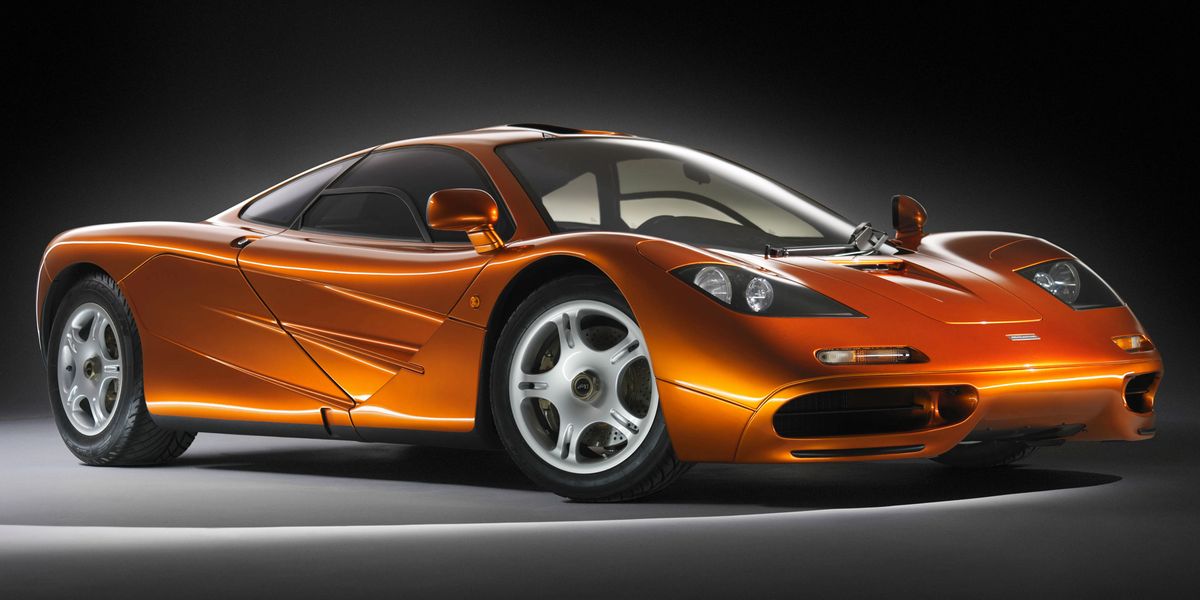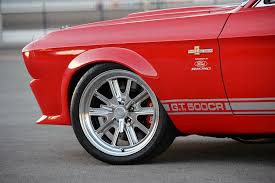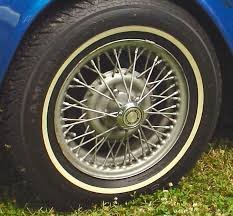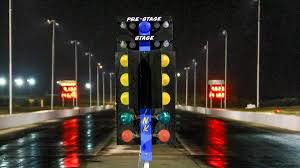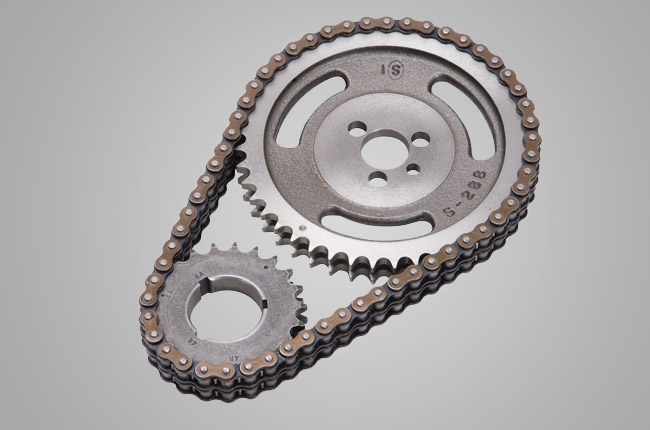A brief history of
Honda
Introduction
The car manufacturer Honda has made an important impact on the automotive world. In this article we will give a brief but detailed history of the Honda marque.
We will look at the origins of Honda looking at who, why, where and when Honda was founded. We'll look at the design of the iconic Honda logo and what are some the more significant Honda models.
We'll take a glance at what racing history the Honda has and who some of the most important people have been in the history of Honda over the years.
Who, where, when and why was
Honda founded?
Honda, the esteemed Japanese automobile manufacturer, was founded by Soichiro Honda and Takeo Fujisawa in 1948. The company's origins can be traced back to Japan's post-World War II era, a time when the country was undergoing significant reconstruction and economic recovery.
Soichiro Honda, a skilled mechanic and engineer, had a lifelong passion for automobiles and motorcycles. In 1946, he established the Honda Technical Research Institute with the aim of developing small internal combustion engines. Honda's ambition was to create affordable transportation options for the war-ravaged Japanese society, which was in need of efficient and reliable modes of transportation.
Honda's efforts soon led to the development of the Honda A-Type engine, a compact powerplant that could be easily attached to bicycles. Recognizing the potential of their invention, Honda and Fujisawa decided to form the Honda Motor Co., Ltd. on September 24, 1948. The company was established in Hamamatsu, Shizuoka, Japan, with Honda serving as the company's president and Fujisawa as the managing director.
Honda's founding principles were rooted in the belief that "success can only be achieved through the relentless pursuit of quality." This philosophy guided the company's early years and laid the foundation for its future success. Honda's commitment to innovation, engineering excellence, and providing affordable transportation options set the company apart from its competitors.
In 1949, Honda released its first complete motorcycle, the Honda Dream D-Type. The Dream series quickly gained popularity in Japan due to its reliability, fuel efficiency, and affordability. Honda's motorcycles were known for their robust performance and ease of use, making them accessible to a wide range of consumers. The success of the Dream series established Honda as a major player in the motorcycle industry and set the stage for its expansion into the automotive sector.
Honda's venture into the automobile industry came in 1963 with the introduction of the Honda T360, a mini-truck. This marked Honda's first foray into four-wheeled vehicles and laid the groundwork for the company's future success in the automotive market. Honda's commitment to engineering excellence, fuel efficiency, and innovative design was reflected in subsequent models like the Honda S500 sports car and the Honda Civic, which debuted in 1972 and quickly became a global success.
One of the key factors behind Honda's rise to prominence was its revolutionary CVCC (Compound Vortex Controlled Combustion) engine technology. Developed in the 1970s, the CVCC engine offered improved fuel efficiency and lower emissions, which aligned with the growing demand for more environmentally friendly vehicles. This breakthrough technology further solidified Honda's reputation as an industry leader in innovation and environmental consciousness.
Over the years, Honda expanded its global presence and diversified its product lineup to include a wide range of automobiles, motorcycles, power equipment, and even aircraft. Honda's commitment to quality, performance, and customer satisfaction propelled the company's growth and established it as one of the world's most respected automobile manufacturers.
Today, Honda continues to innovate and adapt to changing market dynamics. The company's focus on sustainability and electrification is evident in its development of hybrid and electric vehicles. Honda's commitment to engineering excellence and its dedication to creating advanced, reliable, and environmentally friendly transportation solutions have firmly established it as a key player in the global automotive industry.
How did the
Honda logo originate?

How did the Honda logo originate?
The Honda logo, one of the most recognizable automotive logos in the world, has undergone several transformations throughout the company's history. The logo has evolved in parallel with Honda's growth and global expansion, reflecting the brand's values, innovation, and commitment to excellence.
The first Honda logo appeared in 1948 when the company was founded. It featured the company's name "Honda Motor Co., Ltd." written in a stylized font. The logo's simplicity and straightforward design reflected Honda's humble beginnings as a small-scale manufacturer of motorcycles and engines. This early logo laid the foundation for the visual identity of the brand.
In 1953, Honda introduced a new logo known as the "Winged H" emblem. It featured a stylized "H" letter with wings on either side, symbolizing Honda's aspirations for growth and progress. The Winged H logo conveyed a sense of speed, freedom, and the brand's connection to the world of aviation. This emblem was used on Honda motorcycles, emphasizing the company's dedication to engineering excellence and innovative design.
Over the years, the Honda logo continued to evolve to reflect the company's expanding product lineup and global presence. In the 1970s, Honda introduced a simplified version of the Winged H emblem, streamlining the design while retaining the iconic "H" shape. This iteration of the logo represented Honda's commitment to modernity and minimalism, reflecting the design trends of the era.
In 2003, Honda unveiled its current logo, known as the "H-Logo." This logo featured a bold, chrome-plated "H" placed within a stylized, silver ellipse. The design conveyed a sense of strength, stability, and modernity. The H-Logo became the official emblem of the brand, adorning all Honda vehicles and products.
The Honda logo's evolution mirrors the brand's growth from a small motorcycle manufacturer to a global automotive powerhouse. The changes in design reflect Honda's commitment to innovation, design excellence, and adapting to the ever-changing market dynamics. The logo serves as a symbol of Honda's rich heritage, engineering expertise, and dedication to providing high-quality and reliable transportation solutions.
What are some of the significant
Honda models?
Honda, the renowned Japanese automobile manufacturer, has produced a wide range of significant models throughout its history. From compact cars to high-performance sports cars and hybrid vehicles, Honda's lineup has exemplified the brand's commitment to innovation, reliability, and driving enjoyment.
In the 1960s, Honda introduced a model that would become an icon in the automotive world—the Honda S800. Launched in 1966, the S800 was a two-seater sports car that featured advanced engineering and captivating design. It was powered by a high-revving 0.8-liter inline-four engine, delivering impressive performance for its size. With its lightweight construction, independent suspension, and aerodynamic styling, the S800 provided an exhilarating driving experience. The S800 became a symbol of Honda's engineering prowess and laid the foundation for the company's future success in the sports car market.
In the 1970s, Honda introduced the Honda Civic, a compact car that would go on to become one of the best-selling and most recognized models worldwide. The first-generation Civic, launched in 1972, stood out for its fuel efficiency, reliability, and practicality. With its compact dimensions, efficient engines, and innovative features like front-wheel drive, the Civic offered an attractive alternative in the market. The success of the Civic continued in subsequent generations, and it became known for its versatility, comfortable interior, and excellent fuel economy. The Civic's popularity solidified Honda's reputation as a manufacturer of quality and affordable vehicles.
In the 1990s, Honda introduced a groundbreaking model that would redefine the perception of hybrid vehicles—the Honda Insight. Released in 1999, the Insight was the first hybrid car available in the United States market. It featured a lightweight aluminum body, advanced aerodynamics, and an innovative hybrid powertrain. The Insight delivered exceptional fuel efficiency, with the ability to achieve over 60 miles per gallon. The introduction of the Insight demonstrated Honda's commitment to environmental sustainability and its pioneering efforts in hybrid technology. The Insight laid the foundation for future hybrid models from Honda and contributed to the popularization of hybrid vehicles worldwide.
Another significant model in Honda's history is the Honda NSX, introduced in the 1990s as a high-performance sports car. Developed with input from legendary Formula One driver Ayrton Senna, the NSX showcased Honda's engineering expertise and dedication to precision. It featured a mid-engine layout, lightweight aluminum body construction, and advanced technologies like Variable Valve Timing and electronic throttle control. The NSX offered a thrilling driving experience, combining exhilarating performance with everyday usability. The NSX demonstrated Honda's ability to compete with established sports car manufacturers and brought a new level of performance and sophistication to the brand.
In recent years, Honda has continued to innovate with models like the Honda Civic Type R. This high-performance variant of the Civic has garnered widespread acclaim for its aggressive styling, track-ready capabilities, and turbocharged engine producing impressive horsepower. The Civic Type R represents Honda's commitment to delivering thrilling performance while maintaining the practicality and reliability for which the Civic is known.
Furthermore, Honda's commitment to sustainable mobility is evident in its lineup of hybrid and electric vehicles. The Honda Accord Hybrid and Honda Clarity Plug-In Hybrid showcase Honda's engineering prowess and commitment to reducing environmental impact. These models combine fuel efficiency with spacious interiors, advanced safety features, and modern technology, offering a compelling option for those seeking eco-friendly transportation.
Throughout its history, Honda has consistently produced models that cater to a wide range of consumers, from practical and efficient daily drivers to high-performance sports cars and environmentally friendly vehicles. Honda's commitment to innovation, reliability, and driving enjoyment has cemented its position as a leading manufacturer in the global automotive industry.

One of Honda's Most Iconic Models
Who are some of the most important people in
Honda's History
Honda, the esteemed Japanese automobile manufacturer, owes much of its success and innovation to the significant individuals who have played key roles in the company's history. From visionary founders to talented engineers and executives, these people have left an indelible mark on Honda and contributed to its reputation as a leading global automotive brand.
Soichiro Honda: Soichiro Honda, the co-founder of Honda Motor Co., Ltd., was a pioneering figure whose relentless determination and innovative mindset shaped the company's trajectory. Honda's passion for engineering and his unwavering pursuit of excellence laid the foundation for Honda's success. His notable achievements include the development of the Honda A-Type engine and the founding of the Honda Technical Research Institute, which eventually led to the establishment of Honda Motor Co., Ltd. Honda's visionary leadership and entrepreneurial spirit have left a lasting impact on the company's culture and commitment to engineering innovation.
Takeo Fujisawa: Takeo Fujisawa, Honda's co-founder and business partner, played a pivotal role in shaping the company's business strategy and organizational structure. Fujisawa's expertise in sales and marketing complemented Honda's engineering prowess, helping to establish Honda as a successful automotive manufacturer. He spearheaded Honda's expansion into international markets and played a crucial role in building the brand's reputation for quality and reliability. Fujisawa's business acumen and emphasis on customer satisfaction laid the foundation for Honda's customer-centric approach, which remains a core value of the company to this day.
Nobuhiko Kawamoto: Nobuhiko Kawamoto served as the President and CEO of Honda from 1990 to 1998, a period marked by significant growth and technological advancements for the company. Kawamoto's leadership was instrumental in Honda's global expansion and diversification. Under his guidance, Honda introduced innovative technologies such as VTEC (Variable Valve Timing and Lift Electronic Control), which enhanced engine performance and fuel efficiency. Kawamoto's commitment to research and development, coupled with his strategic vision, positioned Honda as a leader in automotive engineering and technology.
Takanobu Ito: Takanobu Ito, who served as President and CEO of Honda from 2009 to 2015, played a key role in steering the company through a period of global economic challenges and environmental consciousness. Under Ito's leadership, Honda emphasized environmental sustainability and introduced a range of hybrid and fuel-efficient vehicles. Ito's focus on research and development led to advancements in areas such as hydrogen fuel cell technology and electric vehicles. His commitment to innovation and environmental stewardship reinforced Honda's reputation as a forward-thinking and environmentally conscious automaker.
These are just a few examples of the significant individuals who have shaped Honda's history and contributed to its success. Countless engineers, designers, and executives have played crucial roles in Honda's technological advancements, product development, and business strategies. Their collective efforts, dedication, and passion have established Honda as a global automotive powerhouse known for its quality, reliability, and cutting-edge technology.

One of the most influential people in the history of Honda
Honda's Racing History
Honda, the esteemed Japanese automobile manufacturer, has a rich and storied racing history that spans several decades and various motorsport disciplines. The company's involvement in racing has not only showcased its engineering prowess but has also served as a platform for technological innovation and a means to push the boundaries of performance.
One of Honda's earliest forays into motorsport came in the 1960s when it entered Formula One racing. Honda made its Formula One debut as an engine supplier, providing power units to various teams. In the 1980s, Honda engines began to dominate the sport, particularly in partnership with the McLaren team. Honda-powered cars, such as the McLaren MP4/4, driven by Ayrton Senna and Alain Prost, secured multiple championships and enjoyed tremendous success on the track. Honda's technological advancements in engine design, particularly in turbocharging and aerodynamics, propelled the company to the forefront of Formula One racing.
Honda's racing ambitions extended beyond Formula One, as the company also made a significant impact in motorcycle racing. In the 1960s, Honda motorcycles began competing in various racing championships, including the prestigious Isle of Man TT. Honda's motorcycles quickly gained a reputation for their reliability, performance, and cutting-edge technology. The company's success in motorcycle racing, particularly in events like the Isle of Man TT and the MotoGP World Championship, solidified Honda's position as a dominant force in two-wheeled motorsport.
In the 1990s, Honda turned its attention to endurance racing, specifically the 24 Hours of Le Mans. Honda developed the Honda NSX-GT, a race car based on its iconic NSX sports car, to compete in the GT1 class. The NSX-GT showcased Honda's commitment to performance and innovation, featuring advanced aerodynamics, lightweight construction, and a powerful V6 engine. While the NSX-GT faced strong competition from established manufacturers, it demonstrated Honda's dedication to challenging the limits of performance and endurance.
Another notable chapter in Honda's racing history is its involvement in the IndyCar Series, an open-wheel racing championship in the United States. Honda has been a prominent engine supplier in the series, providing power units to various teams. Honda-powered cars have achieved numerous victories and championships in the IndyCar Series, showcasing the brand's commitment to performance and reliability. Honda's success in IndyCar racing has helped solidify its reputation as a leading engine manufacturer in the motorsport world.
Furthermore, Honda's commitment to motorsport extends to grassroots racing and supporting aspiring drivers. The Honda Racing Line program provides support and resources to racers competing in various levels of motorsport, ranging from amateur racing to professional series. This initiative highlights Honda's dedication to nurturing talent and fostering a passion for motorsport at all levels.
Throughout its racing history, Honda has embraced the spirit of competition, pushing the boundaries of performance and technological innovation. The company's involvement in Formula One, motorcycle racing, endurance racing, and IndyCar has allowed Honda to showcase its engineering expertise and demonstrate its commitment to delivering high-performance vehicles for both the road and the track. Honda's racing endeavors have not only provided excitement and entertainment for fans but have also translated into advancements in automotive technology, benefiting Honda's production vehicles and contributing to the overall evolution of the industry.
Summary
Honda, the esteemed Japanese automobile manufacturer, is renowned for its commitment to innovation, reliability, and engineering excellence. With a rich history spanning several decades, Honda has established itself as a global powerhouse in the automotive industry, offering a diverse range of vehicles that cater to a wide spectrum of consumers.
From compact cars to high-performance sports cars, hybrid vehicles, and motorcycles, Honda's line-up showcases its dedication to creating vehicles that combine practicality, fuel efficiency, and exhilarating driving experiences. The company's success can be attributed to its unwavering focus on quality, customer satisfaction, and technological advancements.
View Honda Car Specifications
More Manufacturer Histories.



